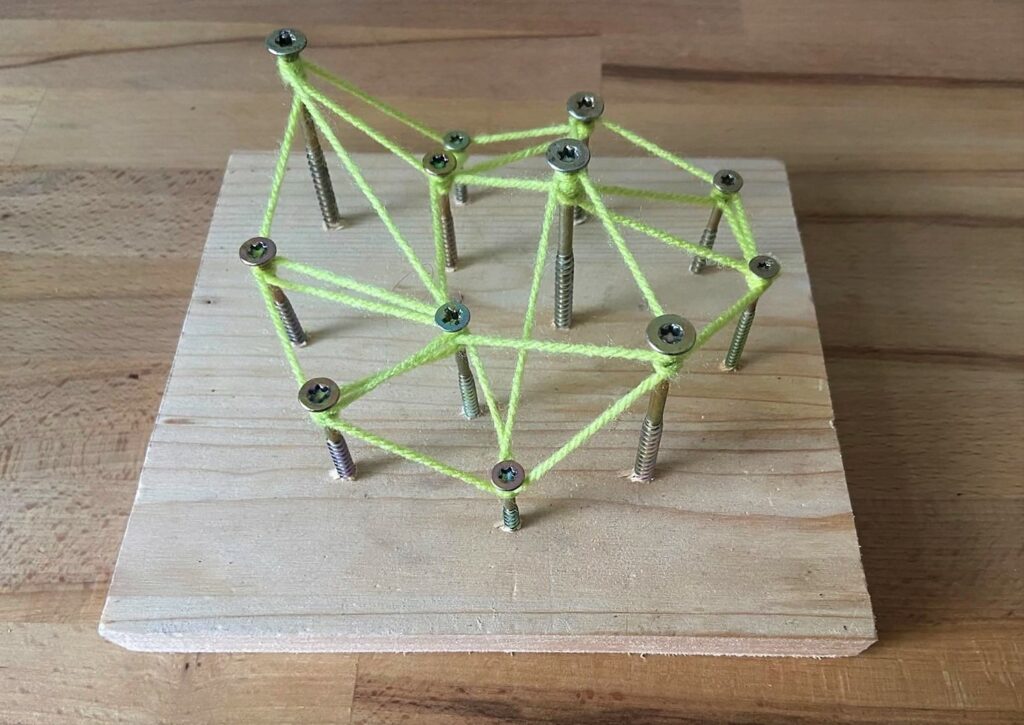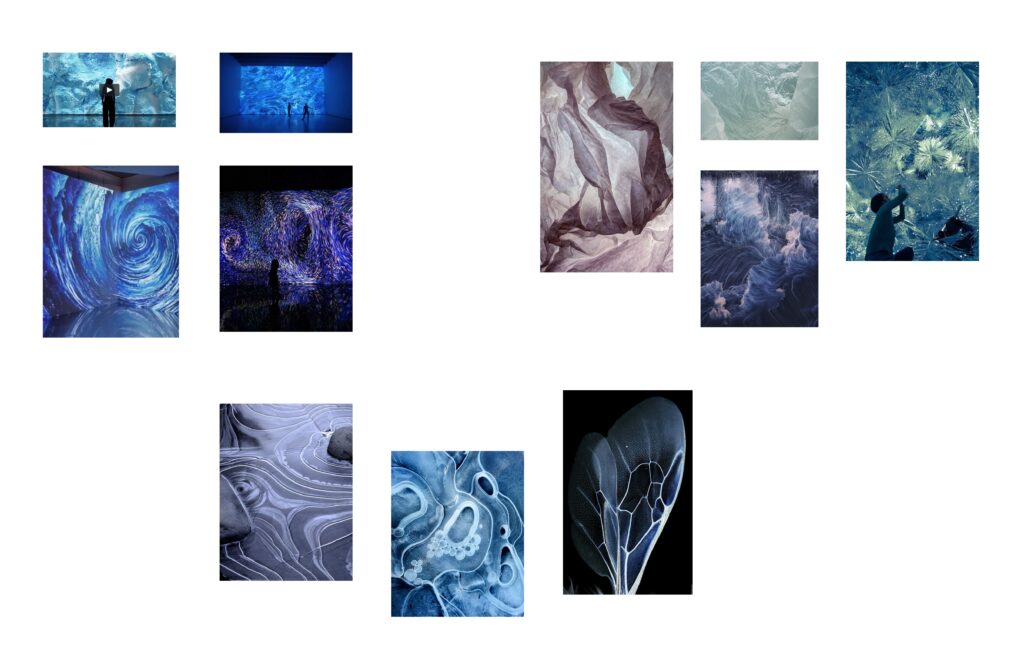Until now the focus of my research was about communicating social and environmental problems with the help of tangible user interfaces. In this blogpost I want to concretize my current topic of my master thesis and focus on one specific environmental problem – “melting ice sheets and their impact on sea level rise – starting a so called “chain reaction”.
So how should such an exhibit be designed, to not only offer great experience but also stating a call to action?
What is the perfect symbiosis between the digital and analog medium for communicating sensitive topics like climate change?
Staying true to the concept of multisensory experiences I would like to create an exhibit that has the following layers of abstraction:
Physical feedback
For the physical representation of an ice cap, I want to build a three-dimensional model out of sticks covered by an elastic mesh. The height of the sticks can be controlled separately with a motor, giving the impression of a shape changing constantly.

Audio feedback
By recording the cracking of an ice bucket with contact microphones, I want to create a sound similar to a cracking ice cap.
https://freesound.org/embed/sound/iframe/268023/simple/large/
Video feedback
In terms of video, I want to project morphing organic shapes onto the physical representation of the ice cap. The shapes could be generated with programs like OpenFrameworks and real data sets of melting caps[1]. With the help of machine learning and algorithms the complexity of the data sets could be drastically reduced – however further research and testing is needed[2].

User Interface
The visitors should be able to see changes of the ice cap based on their ecological footprint. The ecological footprint gives an indicator on the greenhouse gas emissions, can be converted to emitted energy and further be linked to the capability of melting ice.
The interface itself has yet to be explored but will be of great importance to successfully link the individual ecological footprint with the ice cap and make the visitors emotionally bonded to the exhibit.
References:
[1] https://umap-learn.readthedocs.io/en/latest/
[2] Algorithmus: https://umap-learn.readthedocs.io/en/latest/